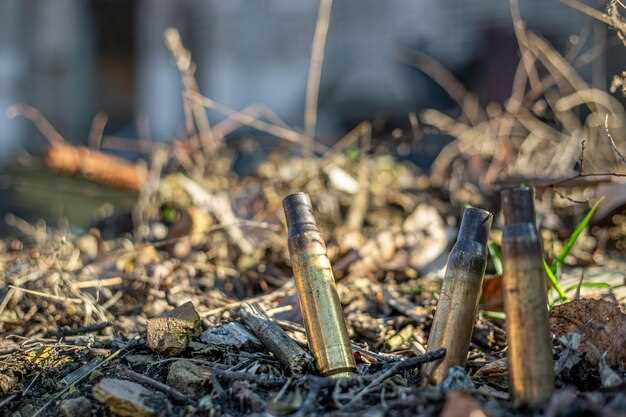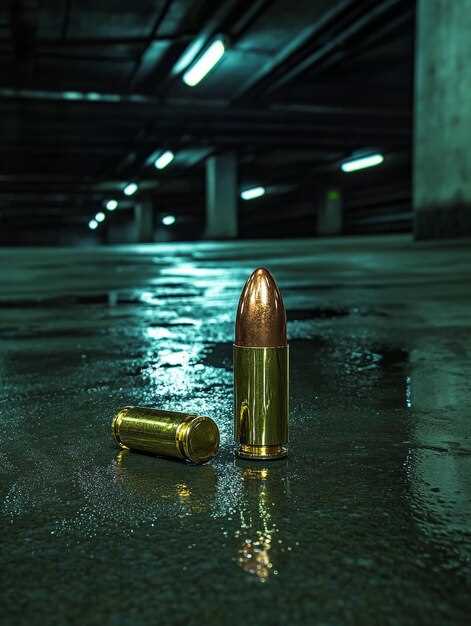
The effects of weather on ammo performance

The performance of ammunition is influenced by a variety of factors, among which weather conditions play a crucial role. Changes in temperature, humidity, precipitation, and wind can significantly affect the trajectory, velocity, and overall effectiveness of projectiles. Understanding these influences is essential for military strategists, competitive shooters, and ammunition manufacturers alike.
Temperature impacts the chemical properties of gunpowder and the velocity of bullets. As temperatures rise, the rate of combustion can increase, leading to higher muzzle velocities, which can alter shooting accuracy and effective range. Conversely, in colder weather, ammunition may not perform optimally, resulting in reduced velocities and increased fouling in the barrel.
Humidity is another critical factor that cannot be overlooked. High humidity can lead to moisture absorption in the ammunition, affecting its reliability and performance. Furthermore, changes in atmospheric pressure contribute to the behavior of projectiles in flight, altering their trajectory and precision. For shooters, these variations underscore the necessity of adjusting their techniques based on real-time weather assessments.
Additionally, wind conditions during shooting can dramatically change the intended path of a bullet, requiring marksmen to compensate for drift. Crosswinds can lead to significant lateral deviations, emphasizing the need for comprehensive weather analysis to ensure accuracy. In conclusion, the interplay between weather and ammunition performance warrants meticulous study, as it plays a pivotal role in achieving desired outcomes in various shooting scenarios.
How Temperature Variations Influence Bullet Trajectory

Temperature plays a critical role in the performance of ammunition, affecting the trajectory of bullets in several significant ways. As temperatures fluctuate, the density of the air surrounding the bullet changes, which directly impacts aerodynamic drag. At higher temperatures, the air becomes less dense, resulting in reduced drag on the bullet. This decrease allows the projectile to maintain a flatter trajectory over longer distances, enhancing accuracy and stability.
Conversely, colder temperatures lead to denser air, increasing drag and potentially causing a bullet to drop more quickly due to the greater air resistance. Shooters must account for these variations, as they can skew the expected path of the bullet, especially at long ranges. Adjustments to aim and elevation may be necessary to compensate for the altered trajectory caused by temperature shifts.
Additionally, temperature affects the ballistic coefficient of the ammunition. Some materials and propellants exhibit changes in combustion efficiency at varying temperatures, influencing muzzle velocity and, consequently, trajectory. For example, colder conditions can slow down the burn rate of certain powders, resulting in less energy being transferred to the bullet, while hot conditions may enhance performance by creating more consistent ignition.
Furthermore, temperature impacts the firearm itself. Metal components can expand or contract, influencing the overall alignment and performance of the weapon, which in turn affects trajectory. Shooters must be aware of these factors and conduct thorough tests in different temperature ranges to ensure they understand how environmental conditions will affect bullet performance.
In summary, temperature variations significantly influence bullet trajectory through air density, aerodynamic drag, ballistic coefficient changes, and firearm performance. Understanding these dynamics is essential for precision shooting and ensures that marksmen can adapt their techniques to maintain accuracy under varying environmental conditions.
The Role of Humidity in Ammunition Stability and Accuracy

Humidity plays a critical role in the performance of ammunition, affecting both its stability and the accuracy of trajectory. When humidity levels fluctuate, the behavior of gunpowder and the properties of the projectile can change significantly. High humidity can lead to moisture absorption by the propellant, which may alter burn rates and pressure levels during firing.
Ammunition designed for specific environmental conditions may perform inadequately in humid settings, causing inconsistencies in projectile velocity. This variation can directly impact the trajectory, resulting in deviations from the intended path. Furthermore, moisture can lead to corrosion of metal components, affecting the overall reliability and safety of the ammunition.
Low humidity, on the other hand, can contribute to static electricity buildup, potentially igniting propellant irregularly. Such ignitions can cause erratic firing performance, thus influencing the accuracy and stability of shots. Additionally, dry conditions may enhance the degradation of certain materials used in cartridges, leading to increased failure rates in less resilient designs.
To mitigate the effects of humidity, proper storage and handling of ammunition are essential. Utilizing sealed containers and desiccants can help maintain the integrity of the ammunition, ensuring consistent performance. Shooters should also consider environmental conditions during planning and execution to adjust for potential trajectory changes caused by humidity levels.
In conclusion, recognizing the influence of humidity on ammunition performance is essential for achieving optimal stability and accuracy. By understanding its impacts, shooters can better prepare and adapt their approach to maintain desired shooting outcomes.
Wind Conditions: Assessing Their Effects on Long-Distance Shooting
Wind is one of the most significant environmental factors influencing the performance of ammunition and the accuracy of long-distance shooting. Even the slightest breeze can alter the trajectory of a bullet, making it essential for shooters to understand and account for wind conditions when aiming for precision.
The effect of wind on bullet trajectory can be both direct and indirect. As a bullet travels through the air, it is subjected to lateral forces, predominantly caused by crosswinds. A crosswind can push the bullet off its intended path, leading to impact deviations that can significantly increase the distance between where the bullet lands and the target. Understanding the strength and direction of the wind is crucial for shooters to make the necessary adjustments to their aim.
Wind speed is often measured in miles per hour (mph) or meters per second (m/s), and varying conditions can have a profound influence on shooting outcomes. Light winds (under 5 mph) may be manageable with minor adjustments, while stronger winds can require substantial compensation in aiming. It is not only the strength but also the consistency and direction of the wind that factors into the calculations.
Another critical aspect to consider is wind gradient, which refers to changes in wind speed with altitude. As a bullet rises, it may encounter different wind speeds, affecting its trajectory. Shooters must be aware of these variations, particularly at longer distances, to accurately predict bullet drop and drift.
To mitigate the effects of wind, shooters often rely on techniques such as the use of wind flags, mirage observation, and ballistic calculators. Wind flags are visual aids that indicate wind direction and strength, while mirage can offer clues about wind conditions based on heat distortion seen above the target. Ballistic calculators can assist in making precise adjustments by taking various environmental factors, including wind, into account.
Ultimately, mastering the impact of wind on ammunition performance requires practice, experience, and an understanding of the complex interactions between the bullet, the atmosphere, and the shooter. By accurately assessing wind conditions and adjusting accordingly, shooters can significantly enhance their accuracy and efficacy in long-distance engagements.




